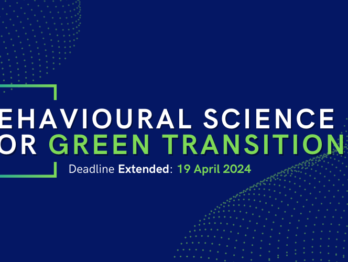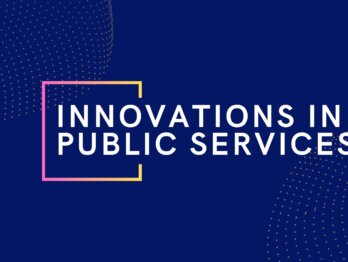Chile’s road to algorithmic transparency: Setting new standards in Latin America

English
To what extent are our lives being impacted by automated decisions? How are those decisions being made? How do algorithms work and based on what data do they work? And how is that information being managed? Questions perhaps once reserved for those who develop technological solutions, are now in our daily conversations.
The pace of the advance of artificial intelligence and automated systems in general and the breadth of opportunities they offer us to address social problems, means that their development has not gone hand in hand with the necessary ethical reflection on the undesired impacts they could have on the population. This is particularly critical when we are talking about services provided by the State. On that basis, the Chilean Universidad Adolfo Ibáñez (UAI) and the Council for Transparency (CPLT) decided to work together to generate a standard of algorithmic transparency for the public administration of the country.
This path began in 2021, when the CPLT and the UAI, through GobLab, the public innovation laboratory of the School of Government, conducted an investigation on how many Chilean state agencies were using algorithms in their decision-making systems.
Through this process we generated a first registry that included, for example, neural networks that analyze the legality of medical licenses to detect possible fraud, algorithms that are used to schedule a meeting at the immigration office or to assign subsidies, and the School Admission System that enrolls students according to selection criteria such as geographic proximity or if the student has a sibling in the establishment.
This review revealed that there is an intensive use of personal data in the State and that there are great asymmetries in the levels of transparency offered to citizens regarding who, how and when these technologies are being used in the country’s public agencies. Thus, there is a need to move forward to solve these gaps and ensure adequate transparency when public management is supported by algorithms that directly impact the population.
In 2022 we deepened our alliance and the CPLT joined the Ethical, Responsible and Transparent Algorithms project, an initiative led by the UAI and funded by IDB Lab, the IDB Group’s innovation laboratory. Through this initiative we are developing a General Instruction (GI) of Algorithmic Transparency, a regulation that will be published during 2023 and will make Chile the first country in the region to have a guideline of this type.
The general instruction will mandate more than a thousand public agencies to report the algorithms they use to serve the population, as a further obligation of active transparency. Mandated algorithmic transparency will include the:
- Identification of the algorithmic systems used, including their name, internal identifier, ownership of the rights to the system, name and link of the provider and version with date.
- Services, programmes, benefits or State programmes that use the algorithm, including name of the service and its description, link, name and identifier of the associated automated system, name of the unit that uses the system, query channel, link to website containing further information on the service and the regulation that established it.
- Aspects of algorithm operation, such as name and identifier, objective description of its operating logic, whether and what personal data it uses, whether it profiles or categorises people and, if so, what profiles or categories it draws upon, as well as whether there is a complaint channel, among other aspects.
In this way, the General Instruction on Algorithmic Transparency will allow people to know, for example, whether the delivery of a certain subsidy or benefit is supported by the decision-making of an algorithmic model and, if so, which one, the logic behind its decisión-making, and basic aspects related to the origin of these systems. Furthermore, it ensures that this information is easily available and in clear language accessible for non-specialists.
For both the UAI and the CPLT, it was essential that the development process of the General Instruction is participatory and allow spaces for different actors to get involved. Both public institutions – that will have to report on their algorithms – and civil society actors – that may need access to such information – participated in working groups and a pilot to test the applicability of the future regulation. The results and lessons learned in these stages have already been analysed to make adjustments to the proposal, taking into account, on the one hand, the difficulties of collecting and making information publicly availableand, on the other hand, the observations of users when reviewing what has been published and analysing its usefulness and ease of access. The next step will be to carry out a public consultation.
We are aware that this is a first step in a long and complex transition towards the responsible use of data when automated systems, as in artificial intelligence, are used. At the same time, we hope that this joint work can serve as a model beyond our borders and help to define, from Chile, a global path.
This guest blog is inspired by the Global Trends in Government Innovation 2023 report from the OECD and MBRCGI. The report presents four major trends in government innovation for 2023, including Trend 1 on new forms of accountability for a new era of government. Through this blog series, we hope to provide a deeper understanding of the current state and future direction of government innovation, and generate conversations about how governments can continue to improve and innovate in the years ahead.
Español
El camino de Chile hacia la transparencia algorítmica: Estableciendo nuevos estándares en América Latina
¿Hasta qué punto nuestras vidas están siendo impactadas por decisiones automatizadas? ¿Cómo se toman esas decisiones? ¿Cómo funcionan sus algoritmos y con base a qué datos trabajan? ¿Y cómo está siendo administrada esa información? Preguntas quizás antes reservadas para quienes desarrollan soluciones tecnológicas, hoy están en las conversaciones cotidianas de todos nosotros.
Y es que el avance de la inteligencia artificial y sistemas automatizados en general es tan rápido y las oportunidades que nos ofrecen para abordar problemas sociales son tan amplias, que su desarrollo no ha alcanzado a ir de la mano de una necesaria reflexión ética sobre los impactos indeseados que podrían tener en la población. Esto es particularmente crítico cuando estamos hablando de servicios que provee el Estado, y por eso en Chile desde la Universidad Adolfo Ibáñez (UAI) y el Consejo para la Transparencia (CPLT) decidimos trabajar en conjunto para generar un estándar de transparencia algorítmica para la administración pública de nuestro país.
Este camino comenzó el año 2021 cuando el CPLT y la UAI, a través del GobLab, el laboratorio de innovación pública de la Escuela de Gobierno, realizaron una investigación sobre cuántos organismos del Estado chileno estaban usando algoritmos en sus sistemas de toma de decisión.
A través de este proceso generamos un primer catastro que incluyó, por ejemplo, redes neuronales que analizan la legalidad de licencias médicas para detectar posibles fraudes, algoritmos que se usan para reservar horas en las oficinas de extranjería o para asignar subsidios, y el Sistema de Admisión Escolar que asigna cupos en escuelas de acuerdo a criterios de selección como cercanía geográfica o si el estudiante tiene un hermano en el establecimiento.
Esta revisión reveló que se hace un uso intensivo de datos personales en el Estado y que existen grandes asimetrías en los niveles de transparencia que se ofrecen a la ciudadanía respecto de quién, cómo y cuándo se usan estas tecnologías en las reparticiones públicas del país. Así, se hizo palpable la necesidad de avanzar para solucionar estas brechas y velar por una adecuada transparencia cuando la gestión pública es apoyada por algoritmos que impactan directamente a la población.
En 2022 profundizamos nuestra alianza y el CPLT se unió al proyecto Algoritmos Éticos, Responsables y Transparentes, iniciativa que lidera la UAI y cuenta con financiamiento de BID Lab, el laboratorio de innovación del Grupo BID. A través de esta instancia estamos desarrollando una Instrucción General (IG) de Transparencia Algorítmica, normativa que será publicada durante 2023 y convertirá a Chile en el primer país de la región en contar con una directriz de este tipo.
La IG va a mandatar a más de mil organismos públicos a informar los algoritmos que usan para atender a la población, como una obligación más de transparencia activa, transparentando los siguientes aspectos:
- Identificación de los sistemas algorítmicos utilizados, lo que incluye su nombre, identificador interno, titularidad de los derechos del sistema, nombre y enlace del proveedor y versión con fecha.
- Servicios, programas, beneficios o programas del Estado que usan el algoritmo, incluyendo nombre del servicio y su descripción, enlace, nombre e identificador del sistema automatizado asociado, nombre de la unidad que usa el sistema, canal de consultas, enlace a sitio web que contenga mayor información del servicio y la normativa que lo establece.
- Aspectos de funcionamiento del algoritmo, como nombre e identificador, objetivo descripción de su lógica de operación, si utiliza datos personales y de qué categorías, si el perfila o categoriza a las personas y cuáles son los perfiles o categorías existentes, si existe una vía de reclamación, entre otros aspectos.
De esta manera la Instrucción General de Transparencia Algorítmica permitirá que las personas puedan saber, por ejemplo, si en la entrega de un determinado subsidio o beneficio hay un modelo algorítmico apoyando la toma de decisiones, cuál y cómo decide, además de otros aspectos básicos relacionados con el origen de estos sistemas, y que esta información esté fácilmente disponible y en un lenguaje claro accesible para personas no especializadas.
Tanto para la UAI como para el CPLT era fundamental que el proceso de desarrollo de la Instrucción General fuera participativo y permitiera espacios para que distintos actores pudieran involucrarse. Es por esto que tanto instituciones públicas que deberán informar sobre sus algoritmos como actores de la sociedad civil que podrían necesitar acceder a dicha información participaron en mesas de trabajo y un piloto de la futura normativa, para probar su aplicabilidad. Los resultados y aprendizajes obtenidos en dichas etapas ya fueron analizados para hacer ajustes a la propuesta, recogiendo por una parte las dificultades detectadas para recolectar y poner la información a disposición de la ciudadanía y, por otra, las observaciones de usuarios al revisar lo publicado y analizar su utilidad y facilidad de acceso. El próximo paso será la realización de una consulta pública.
Estamos conscientes de que este es un primer paso de un largo y complejo tránsito hacia el uso responsable de los datos cuando se utilizan sistemas automatizados, como en inteligencia artificial, pero al mismo tiempo aspiramos a que este trabajo mancomunado pueda servir de modelo más allá de nuestras fronteras y ayude a definir, desde Chile, un camino global.
Este blog invitado está inspirado en el informe Tendencias Globales en Innovación Gubernamental 2023 de la OCDE y MBRCGI. El informe presenta cuatro tendencias principales en innovación gubernamental para el año 2023, incluida la Tendencia 1 sobre nuevas formas de rendición de cuentas para una nueva era de gobierno. A través de esta serie de blogs, esperamos brindar una comprensión más profunda del estado actual y la dirección futura de la innovación gubernamental, y generar conversaciones sobre cómo los gobiernos pueden continuar mejorando e innovando en los años venideros.











